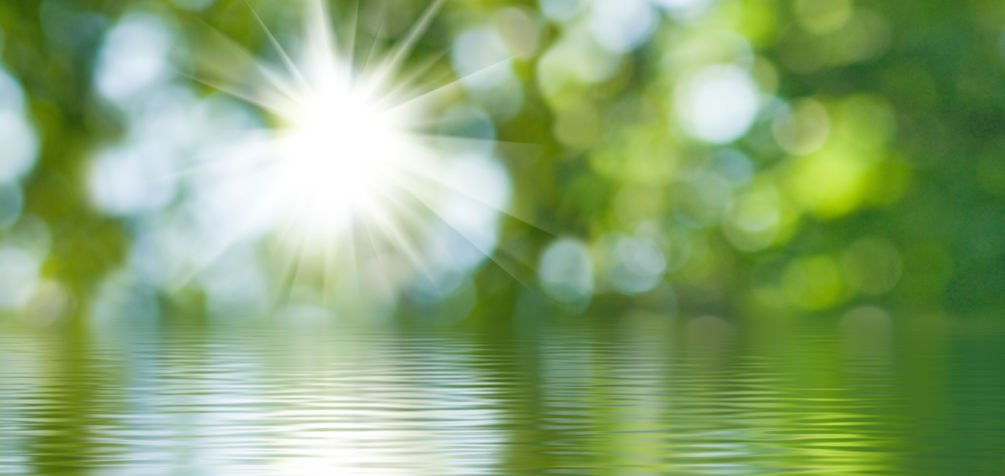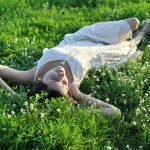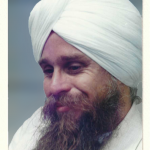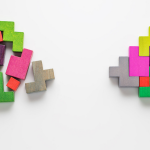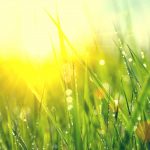Sussanna Czeranko, ND, BBE
Nature Cure Clinical Pearls
In truth, the premises of health and disease, established by experiment and observation, stand untouched, as far as they go; far be it for us to contravene them. It is only in the conclusions of practice that we differ from the great body of our medical brethren.
James Wilson & James M. Gully, 1851, p.126
The [healing] crisis, being the result of the extrinsic efforts of the vital organs, is to be viewed as the signal of their relief, not as the instrument of their relief.
James Wilson & James M. Gully, 1851, p.126
To cure chronic diseases requires great patience and often a considerable time, sometimes many years even. Nature’s work is slow but sure; it is an immense mistake to force Nature by artificial means, and so thousands of operations are needless.
Ludwig Staden, 1902, p.71
The many medical doctors who flocked to Gräefenberg to study with Vincent Priessnitz and learn more about his famed water-cure discovered safe and efficacious healing of every conceivable disease that they themselves struggled to alleviate in their own patients. In this month’s article, I would like to shed some light on the principles that guided Priessnitz and his followers, to understand and harness the power of water as a curative agent. The types of diseases that presented at Priessnitz’s Gräefenberg included infectious diseases that are less well known to the contemporary naturopathic doctor, including smallpox, cholera, typhus, rheumatic fever, diphtheria, etc. However, we discover in the literature, as well, chronic diseases that we encounter every day, such as constipation, dyspepsia, heart disease, headaches, and kidney and liver disease. What Priessnitz recognized as the healing principle in water, the Naturopaths of the early 20th century adopted. Today many healthcare providers have largely ignored and even abandoned water-cure as not evidence-based, perhaps even nonsensical, and certainly archaic and obsolete for the 21st century. I hope to demonstrate the error of this contemporary, premature dismissal of water-cure, or hydrotherapy.
Joel Shew included in his 1851 book, Hydropathy, or the Water-Cure: Its Principles, Processes, and Modes of Treatment, a chapter labeled “Dangers of the Water-Cure Considered,” by Dr James Wilson and James M. Gully from England. The article attempts to summarize the essential principles and practice of water-cure that prevailed in their day. Shew, in his short lifespan of 39 years, produced several books on Priessnitz’s water-cure therapies and documented many cases that he witnessed while studying with the grandfather of hydrotherapy. He brought together other writings from his colleagues esteeming the work of Priessnitz and water-cure. His intention was to raise the caliber of the dialogue concerning water as a curative agent.
Water-Cure & the Tenets of Naturopathy
It was a known fact that many doctors who went to Gräefenberg arrived as skeptics, determined to stop Priessnitz from treating patients. His reputation was worldwide, and so impressive were his cures that many allopathic doctors exhibited considerable envy. These medical men would send hopelessly terminally ill patients to Gräefenberg. In some cases their purpose, given that they expected no successful outcome, was to incriminate Priessnitz for their untimely death. Priessnitz was a gifted diagnostician and was able to determine cases that were hopeless within a short consultation. Those patients were returned to their doctors. Those that were not hopeless were cured by Priessnitz, using water. These patients would invariably return to their medical doctor with news of the resolution of their illness, much to the chagrin of some.
One doctor who visited Priessnitz, however, left with respect and adopted the practice and benefits of hydrotherapy. That doctor was Joel Shew. Some of these principles that Shew corroborated and then documented from his experiences studying with Priessnitz are quite familiar to us, and we can recognize their formative value in our current naturopathic philosophical tenets. The similarities resonate strongly and are well worth our study to see how the evolution of these foundational tenets ascended essentially from water-cure.
Shew’s inclusion of Wilson and Gully’s treatise outlines 35 principles that summarize within a few pages the essential features of water-cure as practiced by Priessnitz. Almost all of these principles addressed the issue of acute and chronic diseases. The Naturopaths from the early 20th century reiterated and repackaged these tenets. For example, when we compare Shew’s principles with those introduced by Ludwig Staden in 1902, we discover astonishing parallels. To my knowledge, Staden wrote the first defining article on Naturopathy in the first naturopathic issue of the first naturopathic magazine, The Naturopath and Herald of Health, published by Benedict Lust in January, 1902.
Staden’s article, “What is Naturopathy?” presents 12 principles for the emerging movement of Naturopathy. He prefaces his list of principles with assurances that Naturopathy is based upon sound scientific reasoning. He writes, “There are two kinds of sciences: absolute, or pure, and empirical science.” (Staden, 1902, p.15) He elaborates and presents the genesis of Naturopathy:
Unity in variety, and variety in unity. This is the cardinal point of Naturopathy, which entitles it to recognize actually only one disease and to explain the apparent diversity of forms and symptoms. How could it otherwise be possible that a man like Priessnitz, the originator of Naturopathy, who could not write nor read, was able to perform such wonderful cures that his name became known all over the world?”
(Staden, 1902, p.15)
Staden’s statement introduces us to disease, which is elaborated in his listing of Naturopathy’s principles. Perhaps more importantly, Staden recognized the place that Priessnitz had in the formation of Naturopathy.
Morbid Mischief
Wilson and Gully’s list of 35 principles reads succinctly and presents in an orderly step-by-step fashion a concise overview of Priessnitz’s theoretical basis for healing with water. In the preamble to the itemized principles, the first order of business sets the ground for water-cure, conforming to strict factual doctrines. Wilson and Gully write, “The following propositions will show that the applications of the water cure are in strict accordance with the facts and phenomena of the living organism …” (Shew, 1851, p.126) In presenting their first and second principles, Wilson and Gully determine what disease is, and the word “morbid” is introduced, describing the condition or state that causes disease. In this connection, Shew writes, “A series of unnatural symptoms constitutes a disease. This disease is referred to as a morbid condition of some of the textures of the body.” (Shew, 1851, p.127) The third principle introduces the fever as the primary characteristic of an acute disease. The fever is raised in a second naturopathic article by Staden, who elaborates on acute and chronic disease. He reiterates: “A characteristic symptom of acute disease is the fever; it is a process of combustion of accumulated morbid matter in the entire system which has transformed in fermentation, it is therefore a self-healing and self-purifying process of Nature.” (Staden, 1902, p.69)
In the 1851 literature of Wilson and Gully, we learn that there is a hierarchy to symptoms and disease expression. Wilson’s and Gully’s eighth principle states, “Acute disease, then, is the violent effort of the internal and vital organs to cast their mischief on external and less important organs.” (Shew, 1851, p.127) An example: “Thus, acute inflammation of the liver, stomach, or lungs, causes fever; that is, an effort to throw the mischief on the skin, the bowels, or the kidneys.” (Shew, 1851, p.127) What is important in this principle is that disease comes about when the body accumulates impurities and attempts to dislodge them. Inflammation and fever are the body’s efforts to house-clean.
In comparing the Wilson and Gully writings with those of Staden, one can discover consistent commonalities. Fever as a keynote for acute disease is actually the body’s expression of restoring itself back to health by eliminating the cause of the symptoms. We cannot gloss over the importance of fever as the body’s innate healing wisdom. Wilson and Gully recognized that “disease is curable when the power of the [body] is sufficiently strong to throw the morbid action from a more to a less important organ.” (Shew, 1851, p.127) Staden comments on this same concept in the following: “[Naturopathy] looks upon the fever as the greatest natural healing process, which should never be suppressed by poisons like quinine, antipyrin, etc., but should be guarded like a wild fire.” (Staden, 1902, p.17)
Chronic diseases, on the other hand, “are developed if there is insufficient vitality in the system.” (Staden, 1902, p.17) In a similar fashion, Wilson and Gully cite the nature of chronic disease as incurable when there is insufficient power to eliminate the morbid state. They continue: “The aim of scientific treatment should be to aid the development of the power of the system [body] and its efforts to rid its vital parts of mischief.” (Shew, 1851, p.128) The purpose of the doctor is clear: make the body strong enough to elicit a healing response, and principally in the form of a fever.
In their 1851 article, Wilson and Gully reframe the fever as “acute inflammation, chronic inflammation and congestion.” (Shew, 1851, p.128) Inflammation arises when the morbid mischief causes irregular displacement of blood in the various compartments in the body. Wilson and Gully address the need to stimulate the nervous system to help the body produce the needed power to accomplish a curative action. How to engage the nervous system? Their answer: “This stimulation is the more steady and certain in its results the more universally it is applied to the entire nervous system. To the external skin, therefore, and to the internal skin (as represented by all the lining membranes of the lungs and digestive organs), this stimulation should be applied.” (Shew, 1851, p.128) Continuing, “Pure air applied to the lungs, proper diet, and water applied to the digestive organs, and water applied to the external skin fulfill this intention of stimulation and strengthening most effectively.” (Shew, 1851, p.128)
Water’s Effects
The skin was pivotal in understanding the nature of disease. Priessnitz would administer water applications for the sole purpose of eliciting a reaction in the skin. The relationship between skin and internal organs provides us a clue to the brilliance of Priessnitz. Water-cure was essentially conducted on the skin, using the exterior layer of the body to access and impact the inner vital organs. Wilson and Gully write, “Skin diseases are invariably connected with disease of some internal organs, especially the stomach and bowels.” (Shew, 1851, p.127) It is logical to conclude that water applied to the skin would have deep benefits to the internal organs. Related to this notion, Staden explains the relationship between cold water and fever: “The cold water deflecting from the skin increases the metabolic assimilation contracting the blood vessels of the skin and driving the blood inside; the process of combustion is raised, and since the fever is an increased combustion of ptomaine and leukomaine, the very cold water in consequence of its strong reaction increase the fever and not decrease it.” (Staden, 1902, p.70)
Derived from Nature, the healing agents used by the water-cure therapists and the early Naturopaths are identical. Wilson and Gully remark, “pure water, pure air, proper diet, and regulated exercise are the greatest agents in effecting the cure of disease.” (Shew, 1851, p.128) Expanding the list, Staden writes, “Naturopathy’s materia medica consists of the principal elements which are derived from Nature: light, air, water, heat and clay, non-stimulating diet, exercise and rest, electricity, magnetism and massage, calisthenics, physical culture, mental culture, etc., etc.” (Staden, 1902, p.16)
How healing can be engaged is simple: “In the action and reaction of extreme heat and cold Naturopathy finds the greatest physical power to correct the inharmonious change of matter.” (Staden, 1902, p.18) Just like the water-cure therapists who relied upon water applications, the Naturopaths also knew the value of the wet sheet. Wilson and Gully outline the objectives of how the body restores balance and healing: “1. the re-establishment of obstructed and suppressed secretions; 2. in the elimination of diseased matters through the bowels, kidneys, or skin; and 3. in the formation of a critical action of some sort on the skin. Such results constitutes the crisis of the Water Cure.” (Shew, 1851, p.129) The return of symptoms was referred to by the water-cure people as a crisis and a sign that health was within view. If abstaining from morbid factors could be practiced, then “a crisis [is] evidence of cure of the internal disease.” (Shew, 1851, p.130) Skin symptoms resulting from water-cure were considered a crisis that was desired and a sign of cure.
Staden has a similar discernment: “While the sheet packs are drawing out a great deal of the poison, the lungs are burning down the carbonic acid, the kidneys are excreting the uric acid, and the bowels are discharging large quantities of morbid matter with the feces.” (Staden, 1902, p.70) He continues: “If Nature is healing a chronic disease, it always produces a crisis of a more or less acute form, which may be repeated several times and finally finishes up with a fever. The fever is a sick man’s greatest friend.” (Staden, 1902, p.17)
Staden’s Refinement of Principles
In the principles and practice guidelines laid down by Wilson and Gully, we learn that the goal of treatment is to strengthen the body so that its natural healing processes can mount a fever or a discharge through the skin. The Naturopaths also abided by similar practices. Staden refined some of the principles established a half-century prior to the ones that we are now quite familiar with. Here are some pearls left behind by Staden: “The true Naturopath will always treat individually; he is treating the person, not the case.” (Staden, 1902, p.15) Another, “All power of healing is within us; Nature only, Nature alone solves the problem.” (Staden, 1902, p.16) “Naturopathy attacks always the original cause of every disease. The human body being an organism containing thousands of nerves, blood vessels, etc., which are all most intimately connected, Naturopathy consequently is always treating the entire body.” (Staden, 1902, p.17)
Staden left behind 12 principles of Naturopathy which would later be condensed into the 6 familiar principles at the AANP Rippling River Conference in 1989: Do no harm; treat the patient not the disease; the healing power of Nature; treat the cause; doctor as teacher; and practice prevention.
In the next issue, we will address some common diseases cured by water-cure that stumped doctors 2 centuries ago and continue to, even today.
References:
Shew, J. (1851). The Water-Cure Manual, Volume IV. New York, NY: Fowlers and Wells; pp. 282.
Staden, L. (1902). What is Naturopathy? The Naturopath and Herald of Health, III (1), 15-18.
Staden, L. (1902). Acute and chronic diseases. The Naturopath and Herald of Health, III (2), 69-71.
Image Copyright: <a href=’https://www.123rf.com/profile_cooperr007′>cooperr007 / 123RF Stock Photo</a>

Sussanna Czeranko ND, BBE, incorporates “nature-cure” approaches to primary care by including balneotherapy, breathing therapy, and nutrition into her naturopathic practice. Dr Czeranko is a faculty member working as the Rare Books curator at NCNM and is currently compiling a 12-volume series based upon Benedict Lust’s journals, published early in the last century. Her published books include: Origins of Naturopathic Medicine; Philosophy of Naturopathic Medicine; Dietetics of Naturopathic Medicine; Principles of Naturopathic Medicine; Vaccination and Naturopathic Medicine; and Physical Culture in Naturopathic Medicine. Dr Czeranko is the founder of the Breathing Academy, a training institute for naturopaths to incorporate a scientific model of breathing therapy called Buteyko into their practice. She is also a founding board member of the International Congress of Naturopathic Medicine and a member of the International Society of Medical Hydrology.

